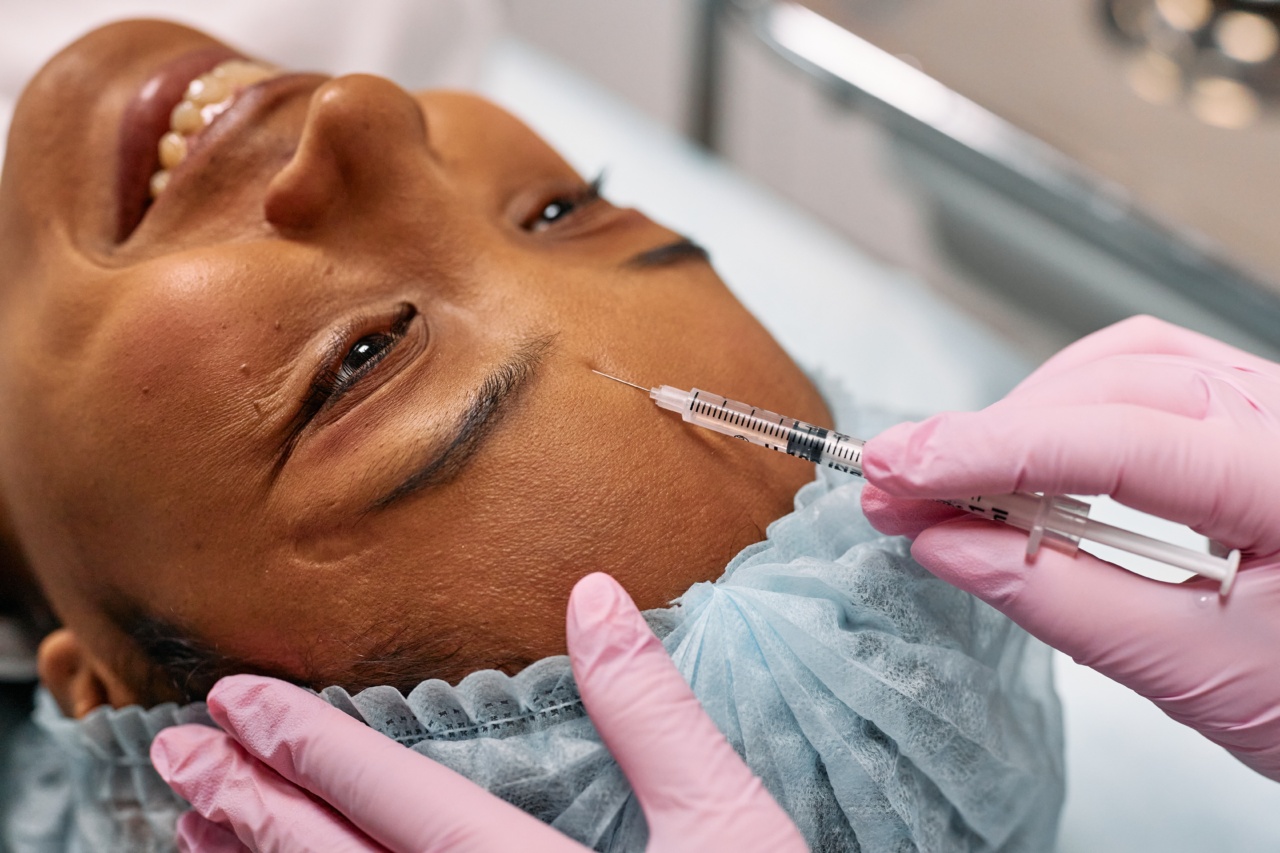Endometriosis is a chronic condition that affects millions of women worldwide. It occurs when the tissue lining the uterus starts growing outside of it, leading to pain, inflammation, and other symptoms.
Despite being a common condition, the treatment options for endometriosis are often limited. However, there has been growing interest in using Botox injections as a potential treatment for alleviating the symptoms of endometriosis. In this article, we will explore the effectiveness of Botox injections in managing endometriosis symptoms.
The Basics of Endometriosis
Endometriosis is a condition that primarily affects women of reproductive age.
The tissue lining the uterus, known as the endometrium, grows outside of the uterus and can implant itself on organs such as the ovaries, fallopian tubes, and other structures in the pelvis. This abnormal growth can lead to the formation of endometrial lesions, which can be painful and cause various symptoms.
The Symptoms of Endometriosis
Endometriosis can cause a range of symptoms, including:.
- Chronic pelvic pain
- Painful menstrual periods (dysmenorrhea)
- Heavy menstrual bleeding (menorrhagia)
- Pain during or after sexual intercourse (dyspareunia)
- Infertility
- Gastrointestinal issues (such as bloating, diarrhea, or constipation)
- Urinary problems (such as frequent urination or blood in the urine)
The severity of symptoms can vary from person to person, with some individuals experiencing mild discomfort while others may have debilitating pain and significant impact on their quality of life.
Current Treatment Options
The treatment options for endometriosis typically depend on the severity of symptoms, desire for future fertility, and the extent of the disease. They may include:.
- Pain medications: Over-the-counter pain relievers such as ibuprofen or prescription medications may be used to manage pain.
- Hormonal therapy: Hormonal therapies, including birth control pills, can help regulate the menstrual cycle and reduce the growth of endometrial tissue.
- Surgery: Laparoscopic surgery may be recommended to remove endometrial tissue, cysts, and adhesions.
The Potential of Botox Injections
Botox, the brand name for botulinum toxin, is commonly associated with cosmetic procedures to reduce wrinkles. However, its use in medicine extends beyond aesthetics.
Botox injections have been used to treat various conditions, including migraine headaches, muscle spasms, and even excessive sweating.
Recent studies and anecdotal evidence have suggested that Botox injections may provide relief for individuals with endometriosis.
The theory behind this treatment approach is that Botox can help relax the pelvic floor muscles and reduce the pain associated with endometriosis-related muscle tightness and spasms.
How Botox Injections Work
Botox works by blocking nerve signals in the injected muscle, temporarily paralyzing it. The muscle remains relaxed, leading to the alleviation of pain and other associated symptoms.
When it comes to endometriosis, Botox may be injected into the pelvic floor muscles to achieve this muscle relaxation effect.
Research on Botox for Endometriosis
Although the use of Botox for endometriosis is still a relatively new area of research, some preliminary studies have shown promising results.
A study published in the Journal of Minimally Invasive Gynecology in 2018 investigated the effects of Botox injections on pelvic pain in women with endometriosis. The study found that Botox injections significantly reduced pain and improved quality of life for the participants.
Another study, published in the Journal of Obstetrics and Gynaecology Canada in 2017, explored the use of Botox injections in combination with hormonal therapy for the treatment of endometriosis.
The results indicated that the combination therapy was effective in reducing pain and the need for additional pain medications.
While these studies show promising results, it’s important to note that larger-scale randomized controlled trials are needed to establish the efficacy of Botox injections for endometriosis.
The existing research provides a foundation for further investigation into this potential treatment option.
Considerations and Potential Risks
Like any medical procedure, Botox injections for endometriosis come with certain considerations and potential risks. It’s important to discuss these aspects with a healthcare provider before undergoing treatment. Some considerations include:.
- Expertise: Botox injections should be administered by a qualified healthcare professional experienced in performing the procedure.
- Duration of effect: The effects of Botox injections are temporary and typically last for a few months. Repeat injections may be necessary to maintain symptom relief.
- Side effects and risks: While generally safe, Botox injections can have side effects such as temporary muscle weakness or injection site reactions. Rarely, allergic reactions or systemic effects may occur.
It’s crucial to have an open and comprehensive discussion with a healthcare provider to understand the potential benefits and risks of Botox injections for endometriosis in your specific case.
Conclusion
Botox injections have shown promise in alleviating symptoms of endometriosis, particularly pelvic pain.
While further research is necessary to fully evaluate the efficacy and safety of this treatment approach, the existing studies provide a framework for exploring Botox injections as a potential option in managing endometriosis symptoms. If you are considering Botox injections for endometriosis, it is vital to consult with a skilled healthcare professional who can assess the suitability of this treatment option for your unique circumstances.


























